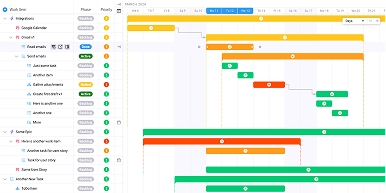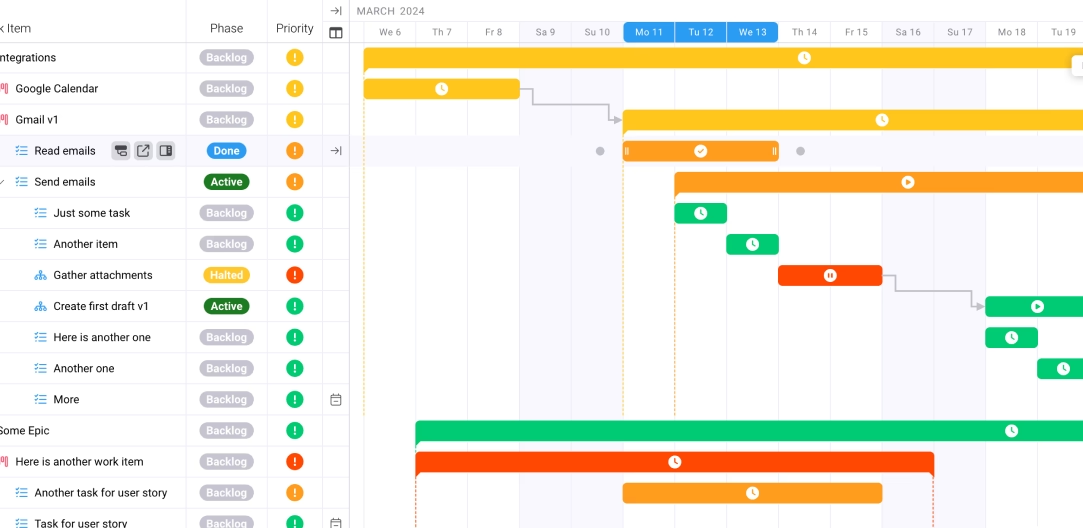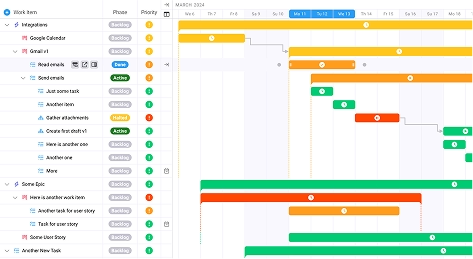
Content Marketing Strategy Guide: How Agencies Create Viral Campaigns
Key takeaways:
- Data-Driven Creative Foundation: 91% of content marketers use video as a marketing tool, but viral success comes from combining format trends with authentic storytelling that triggers emotional responses
- Strategic Performance Measurement: 73% of content marketers use conversions as their top metric, enabling agencies to optimize campaigns for both viral spread and business impact
- Cost-Effective Viral Potential: Content marketing generates more than three times as many leads as outbound marketing and costs 62% less, making viral campaigns a scalable growth strategy
- AI-Enhanced Creative Process: 90% of content marketers plan to use AI in their 2025 strategies, transforming how agencies research, create, and optimize viral content
The landscape of content marketing strategy has fundamentally shifted. While most agencies chase impressions and reach, the most successful campaigns aren’t just seen—they’re shared, discussed, and remembered long after the initial post disappears from feeds. Calvin Klein’s Jeremy Allen White campaign generated $12.7 million in media impact value within 48 hours, proving that strategic content marketing strategy can still break through the noise and capture massive attention in an oversaturated digital environment.
But here’s the counterintuitive truth: viral success isn’t about creating content that appeals to everyone. It’s about crafting campaigns that resonate so deeply with your core audience that they become evangelists for your brand. This comprehensive content marketing strategy guide reveals how leading agencies consistently create campaigns that transcend typical marketing boundaries and achieve genuine viral impact.
The Current Challenge – What’s Broken in the Content Marketing Industry
The content marketing landscape has become a paradox. Despite unprecedented access to creation tools and distribution channels, most campaigns fade into digital obscurity within hours of publication. Agencies are producing more content than ever, yet struggling to achieve meaningful engagement that drives business results.
The root problem isn’t insufficient content volume—it’s the fundamental misunderstanding of what makes content truly shareable. Many agencies still operate under outdated assumptions that viral success is random or purely luck-based. This misconception leads to scattered strategies that prioritize trending topics over audience psychology, resulting in forgettable campaigns that fail to generate lasting impact.
Modern consumers have developed sophisticated filtering mechanisms to ignore promotional content. They’re seeking authentic experiences and genuine value, not thinly disguised advertisements masquerading as entertaining content. 89% of businesses use video as a marketing tool in 2025, yet most video content fails to achieve viral status because it lacks the strategic foundation necessary for widespread sharing.
The oversaturation problem is compounded by platform algorithm changes that increasingly favor authentic engagement over vanity metrics. Brands that rely on outdated viral tactics like manufactured controversy or forced trending hashtag participation find themselves penalized by algorithms designed to promote genuine community interaction.
The Strategic Framework – The VIRAL Content Architecture
Successful viral campaigns aren’t accidents—they’re the result of systematic strategic planning using what leading agencies call the VIRAL Content Architecture: Value-driven, Insight-based, Relatable, Actionable, and Lasting.
Value-driven Foundation: Every viral campaign begins with genuine value creation. The most successful agencies identify specific problems their audience faces and create content that provides immediate, practical solutions. This value-first approach ensures that sharing the content benefits both the sharer and their network, creating natural viral momentum.
Insight-based Strategy: Viral campaigns tap into unique insights about audience behavior, cultural moments, or industry trends that others have overlooked. These insights become the creative springboard for campaigns that feel fresh and relevant rather than derivative or predictable.
Relatable Storytelling: The most shareable content creates immediate emotional connections through relatable scenarios, characters, or situations. This relatability transforms viewers from passive consumers into active participants who see themselves reflected in the content narrative.
Actionable Engagement: Viral campaigns provide clear, compelling reasons for audience action—whether that’s sharing, commenting, creating response content, or participating in challenges. The action should feel natural and rewarding rather than forced or manipulative.
Lasting Impact Design: While viral moments are brief, successful campaigns create lasting brand impressions through memorable messaging, distinctive visual elements, or compelling calls-to-action that extend beyond the initial viral surge.
This framework guides every decision from initial concept development through post-campaign analysis, ensuring that viral potential is built into the campaign’s DNA rather than hoped for as an afterthought.
Implementation Tactics – Five Proven Strategies for Viral Campaign Creation
1. Emotional Trigger Optimization
The most effective viral campaigns trigger specific emotional responses that compel immediate sharing. Research the emotional states most relevant to your audience and craft content designed to evoke those feelings intentionally. Short-form video is the most leveraged media format by marketers, making video the ideal medium for emotional storytelling that drives viral engagement.
Focus on emotions that naturally encourage sharing: surprise, delight, inspiration, humor, or righteous indignation. Avoid negative emotions like fear or anger unless they serve a clear purpose in your brand narrative and align with your audience’s values.
2. Cultural Moment Amplification
Successful agencies monitor cultural conversations, emerging trends, and societal shifts to identify opportunities for timely content creation. The key is contributing meaningfully to ongoing conversations rather than simply jumping on trending hashtags without context or relevance.
Develop systems for real-time trend monitoring and rapid content creation that allow your team to respond to cultural moments while they’re still building momentum. This requires both technological tools and creative processes optimized for speed without sacrificing quality.
3. User-Generated Content Multiplication
93% of marketers acquiring new customers through short video advertisements demonstrates the power of video content, but user-generated video content performs even better because it combines platform-favored formats with authentic social proof.
Create campaign frameworks that naturally encourage user participation and content creation. Provide clear guidelines, branded hashtags, and incentives that make participation rewarding for your audience while generating authentic content that extends your campaign’s reach.
4. Cross-Platform Content Amplification
Design campaigns with platform-specific adaptations that maintain core messaging while optimizing for each platform’s unique audience behaviors and algorithm preferences. This approach maximizes viral potential by ensuring your content feels native to each distribution channel.
Understanding the nuances of key marketing trends agencies should watch in 2025 helps agencies stay ahead of platform changes and audience expectations that influence viral success.
5. Project management Integration for Viral Campaign Success
Successful viral campaigns require seamless coordination across creative, strategy, and distribution teams. Implementing robust project management systems ensures that campaign elements align perfectly and launch timing maximizes viral potential.
Effective content repurposing strategies that maximize ROI for agencies become particularly important when viral campaigns generate unexpected attention, requiring rapid scaling of successful content elements across multiple formats and platforms.
Measuring Success – KPIs and Metrics That Matter
Traditional marketing metrics provide incomplete pictures of viral campaign performance. Successful agencies track engagement velocity (how quickly sharing accelerates), sentiment analysis (what emotions the content triggers), and conversion attribution (which viral touchpoints drive business results).
The most important metrics for viral campaigns include share-to-view ratios, comment engagement depth, cross-platform mention tracking, and long-term brand recall measurements. These metrics provide insights into both immediate viral performance and lasting brand impact.
Monitor engagement patterns to identify optimal posting times, content formats, and messaging approaches that resonate most strongly with your audience. This data becomes invaluable for future campaign planning and viral strategy refinement.
Understanding proven client acquisition strategies for marketing agencies helps agencies demonstrate viral campaign ROI to clients through metrics that connect viral success to business growth.
Advanced measurement requires tracking mentions and conversations that extend beyond your owned channels. Viral campaigns often generate discussions in spaces you don’t directly control, making comprehensive social listening essential for accurate impact assessment.
Consider implementing attribution models that account for viral campaign influence on customer journeys that extend well beyond initial exposure. Viral content often creates awareness that influences purchase decisions weeks or months later.
Future Considerations – Emerging Trends and Next Steps
The future of viral content marketing will be shaped by technological advances, platform algorithm updates, and evolving audience expectations. Agencies must prepare for increased AI integration, privacy-focused targeting approaches, and platform ecosystem changes that influence viral potential.
Artificial intelligence will increasingly support content creation, audience analysis, and campaign optimization. However, the most successful agencies will use AI to enhance human creativity rather than replace it, ensuring that viral campaigns maintain the authentic human elements that drive emotional connection.
Platform consolidation and feature convergence will require agencies to develop more sophisticated cross-platform strategies. Understanding how viral content spreads across interconnected social ecosystems will become increasingly important for campaign success.
Privacy regulations and tracking limitations will necessitate new approaches to audience targeting and campaign measurement. Agencies that develop privacy-first viral strategies will gain competitive advantages as industry regulations continue evolving.
The growing importance of time tracking and resource allocation becomes critical as agencies scale viral campaign production while maintaining quality standards that drive genuine engagement.
Consider developing partnerships with emerging platforms and content creators who can provide early access to new features and audience segments. These relationships often prove valuable when platforms introduce viral-friendly features or algorithm updates.
Invest in team training and tool adoption that keep your agency current with rapidly evolving viral marketing techniques. The agencies that consistently create viral campaigns are those that treat viral strategy as an ongoing competency rather than a one-time skill.
This content marketing strategy guide provides the foundation for creating viral campaigns that drive both immediate engagement and long-term business growth. The agencies that master these approaches will continue creating campaigns that capture attention, drive conversation, and deliver measurable results in an increasingly competitive digital landscape.
Frequently Asked Questions
What makes content go viral?
Viral content combines emotional triggers, cultural relevance, and easy sharing mechanisms. The most successful viral campaigns tap into specific audience emotions while providing clear value that encourages natural sharing behavior.
How long should viral campaigns run?
Most viral campaigns achieve peak performance within 24-72 hours, but successful campaigns often include planned follow-up content that extends engagement and capitalizes on initial viral momentum.
Can small agencies create viral campaigns?
Yes, viral success depends more on strategy and creativity than budget size. Small agencies often have advantages in agility and authentic audience connection that can drive viral performance.
How do you measure viral campaign ROI?
Track both immediate metrics (shares, comments, reach) and long-term business impact (lead generation, brand awareness, customer acquisition) to demonstrate comprehensive campaign value.
What platforms are best for viral content?
Platform choice depends on your audience and content format, but video-focused platforms like TikTok, Instagram, and YouTube currently offer the highest viral potential for most content types.
How often should agencies create viral campaigns?
Focus on quality over frequency. Most successful agencies plan 2-4 major viral campaign attempts per year while maintaining consistent high-quality content that builds audience engagement.
What budget is needed for viral campaigns?
Viral campaigns can succeed with modest budgets if they include strong organic elements. Most successful campaigns allocate 60% of budget to content creation and 40% to strategic distribution.
How do you handle viral campaign failures?
Learn from performance data, audience feedback, and engagement patterns to improve future campaigns. Most agencies require 3-5 attempts before achieving consistent viral success.









